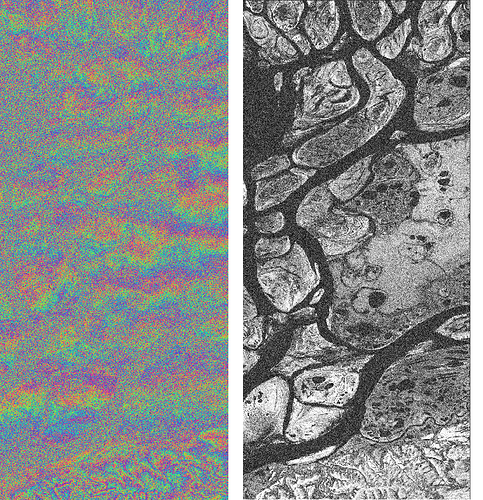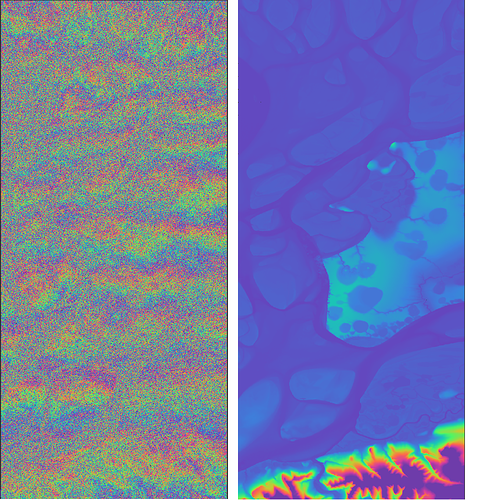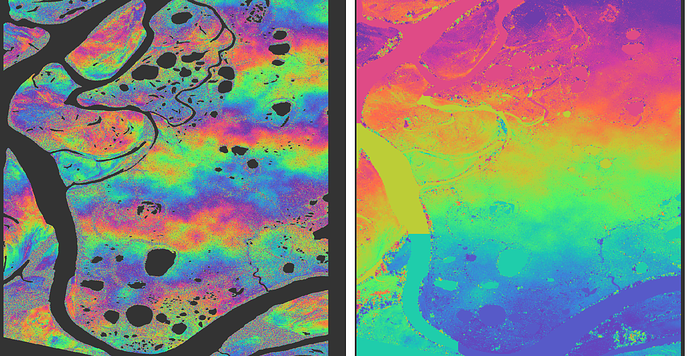Dear all,
I’m working with TerraSAR-X data for the interferometry. I’m trying to switch from gamma to SNAP and started from repeating my gamma workflow in SNAP for one interferometric pair to compare results from both softwares. I have a few issues to discuss. First thing is multilooking. In gamma, multilooking is performed in the step of interferogram formation in order to reduce the noise and to get the better quality interferogram. Coherence is also computed from multilooked data. After searching this forum it looks like the most typical workflow in SNAP is to perform multilooking on the very final stage (or not at all).
I tried to form interferogram from multilooked data and that is what I got (phase and coherence):
(it looks like for the multilooked data flat Earth phase could not be subtracted)
Interferogram from full resolution data look like this:
Then topo phase removal worked quite good with external DEM (with the SNAP 6 beta version. Previous versions were problematic for the external DEM - my experience and many from the forum):
(phase and topo phase)
Now, comparing to the gamma-produced differential interferogram:

In both diff. interferograms we see strong linear features. In gamma there is an option of removing linear phase trends by estimation of residual baseline from the fringe rate. Then this residual baseline is added to the initial baseline and topo phase is rescaled according to the updated baseline. Then subtracting of topo phase is repeated. That’s the result of it:

I wonder if anything similar could be done with SNAP.
Next thing is unwrapping, of course, the most problematic. This is what I got with SNAP snaphu for a subset:
(filtered diff. phase and unwrapped phase)
I don’t like this strong ramping 
Then I was following the advice of @FeiLiu (Is it the right way to create mask for phase unwrapping?) and used DEM with NaNs over the water (lakes and river branches seen in the areas of low coherence) on the coregistering step. This is filtered diff. interferogram of a subset with excluded water bodies and unwrapped interferogram:
Ramp is still there.
This is unwrapped phase made in gamma with branch-cut algorithm:
Also looks the same as unwrapped, just low coherence is excluded.
I would appreciate any comments, suggestions, discussion!
Thanks!!
Sofia





